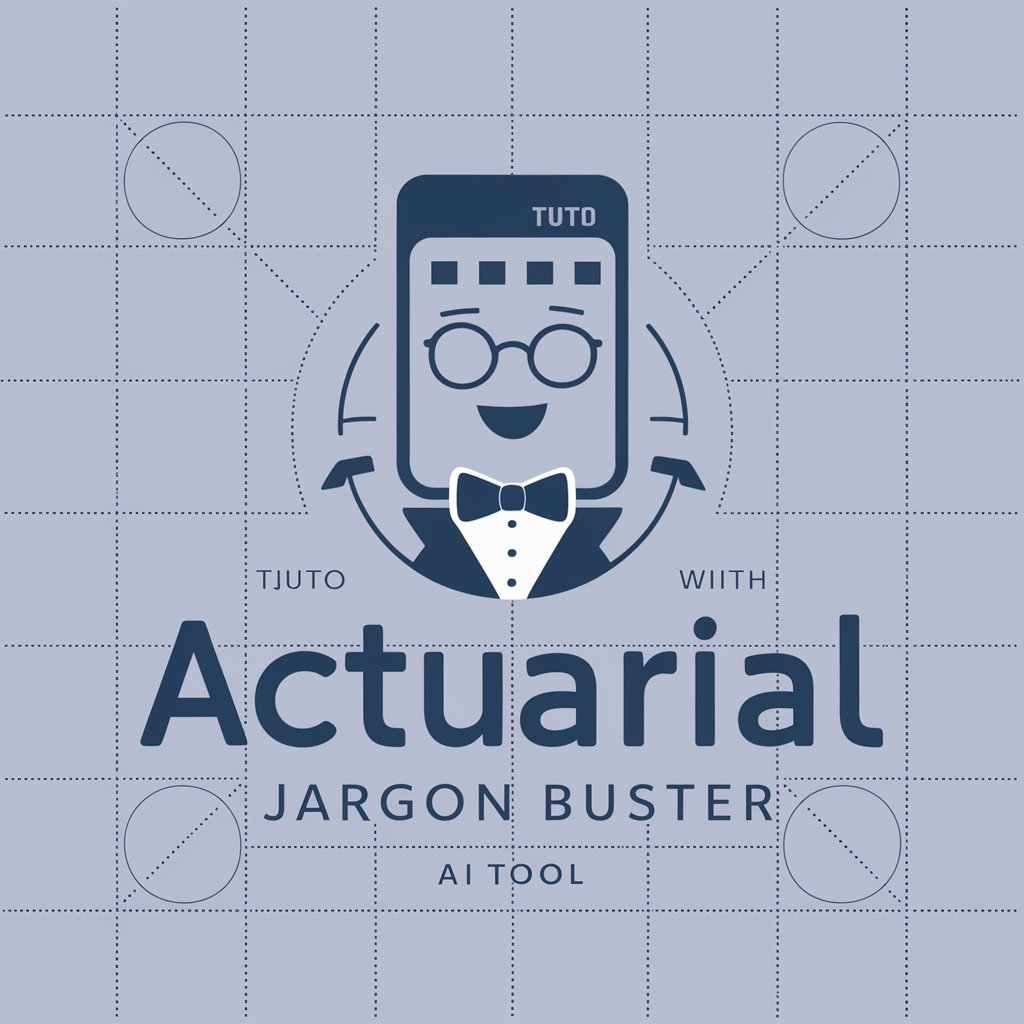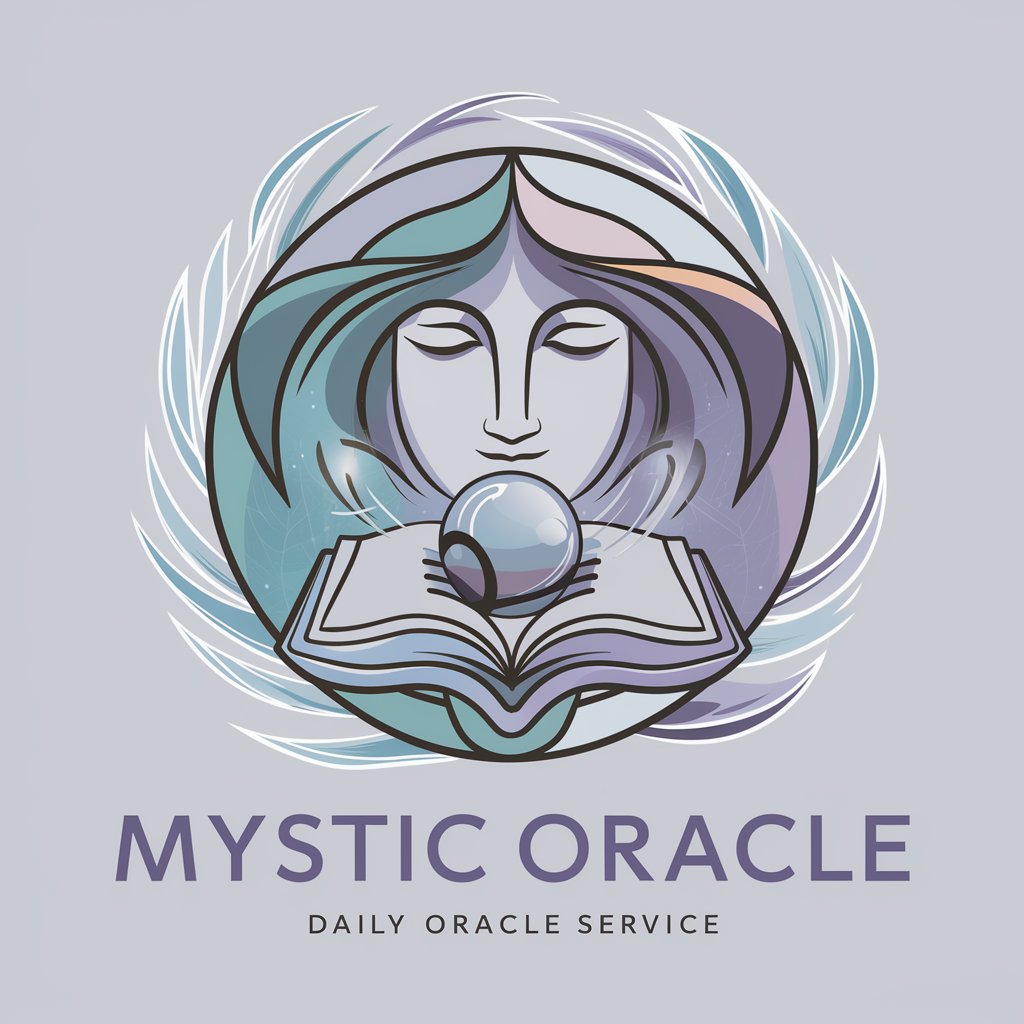Actuarial Jargon Buster - Actuarial Concept Explanation

Hello! Ready to demystify actuarial terms together?
Demystifying Actuarial Science with AI
Explain the concept of risk pooling in simple terms.
What is the importance of the law of large numbers in actuarial science?
How does a life insurance policy work from an actuarial perspective?
Describe the use of predictive modeling in modern actuarial practices.
Get Embed Code
Overview of Actuarial Jargon Buster
Actuarial Jargon Buster is designed to demystify the complex language often used in the actuarial field, making it accessible to a broader audience. This tool serves as a digital guide, translating technical terms into plain language and offering context and examples to enhance understanding. It's particularly useful in scenarios where non-specialists interact with actuarial concepts, such as in business meetings, educational settings, or personal finance consultations. For instance, explaining 'mortality rate' not just as a statistic, but by illustrating its impact on life insurance premiums or pension plans. Powered by ChatGPT-4o。

Core Functions of Actuarial Jargon Buster
Term Explanation
Example
For the term 'actuarial present value', the tool would explain it as the current value of a future series of cash flows, discounted according to the expected risks and returns.
Scenario
Used in a corporate setting where finance teams need to understand the value implications of various insurance and pension-related decisions.
Contextual Usage
Example
Explaining 'loss ratios' by discussing their relevance in determining the profitability of insurance products, which can help an insurance company decide on underwriting policies.
Scenario
Helpful during a strategy meeting where insurance executives evaluate product lines and pricing strategies.
Real-World Application
Example
Illustrating how 'risk management' techniques can apply to setting up reserve funds in small businesses, using everyday examples like budgeting for unforeseen repairs or legal issues.
Scenario
Beneficial for small business owners attending a workshop on financial planning and risk assessment.
Target Users of Actuarial Jargon Buster
Actuarial Students
Students studying actuarial science can use this tool to gain a clearer understanding of industry terminology and concepts, which enhances their learning and prepares them for professional exams and careers.
Insurance Professionals
Professionals in insurance, particularly those new to actuarial roles or in cross-functional teams, can use the tool to bridge knowledge gaps and improve communication with actuaries.
Small Business Owners
Owners who need to manage financial risks without a background in actuarial science will find the tool invaluable for making informed decisions about insurance and pensions.
Educators and Trainers
Educators who teach courses that include actuarial content can use the tool to help explain complex terms in a way that is accessible to students with varied backgrounds.

How to Use the Actuarial Jargon Buster
1
Visit yeschat.ai to try the Actuarial Jargon Buster without any login or subscription required.
2
Select the specific actuarial topic or term you need help with from the provided options.
3
Type your question or paste the jargon-filled text into the input box for analysis.
4
Review the explanations, examples, and analogies provided to better understand the actuarial concepts.
5
Use the 'Ask for More' option to get deeper insights or further clarification on complex terms.
Try other advanced and practical GPTs
HCI Interview Structured Assistant
Streamlining HCI Research with AI

Mystic Oracle
Empowering your journey with AI-powered insights.

Code Crafter
Empowering Your Code with AI

Retro Style Game Creator From An Art Image
Transform Art into Playable Retro Games

Grow Assistant Pro
Elevate Your Grow with AI-Powered Guidance

Logo Lite
Empowering brands with AI-driven logos.

Group 3F chatbox
Empowering your learning journey with AI

PPT Background Image Finder
Elevate Presentations with AI-Powered Images

Phaser.js Magic in Game Development
Empowering game creation with AI

Legal Eagle (US, UK, Canada, Australia)
Empowering legal understanding with AI

US Real Estate Expert
Empowering Real Estate Decisions with AI

BLOGアイキャッチ画像を作る
Craft stunning blog visuals with AI

Frequently Asked Questions About Actuarial Jargon Buster
What is the Actuarial Jargon Buster?
The Actuarial Jargon Buster is a specialized AI tool designed to help users understand and decipher complex actuarial terminology and concepts through simple explanations and relevant examples.
Can I use this tool for learning basic actuarial concepts?
Absolutely! This tool is ideal for beginners to familiarize themselves with basic actuarial principles and terminologies, offering clear definitions and practical illustrations.
Is the Actuarial Jargon Buster suitable for professional actuaries?
Yes, it serves as a quick reference guide for professional actuaries looking to refresh their knowledge or clarify specific terms and advanced topics in their field.
How does the Actuarial Jargon Buster handle different actuarial fields?
The tool is equipped to handle jargon from various actuarial fields, such as life insurance, pensions, health insurance, and risk management, providing tailored explanations for each area.
Can the tool provide real-time updates on actuarial standards and practices?
While it offers comprehensive explanations and examples based on current standards, real-time updates should be verified with the latest industry resources and official actuarial bodies.
